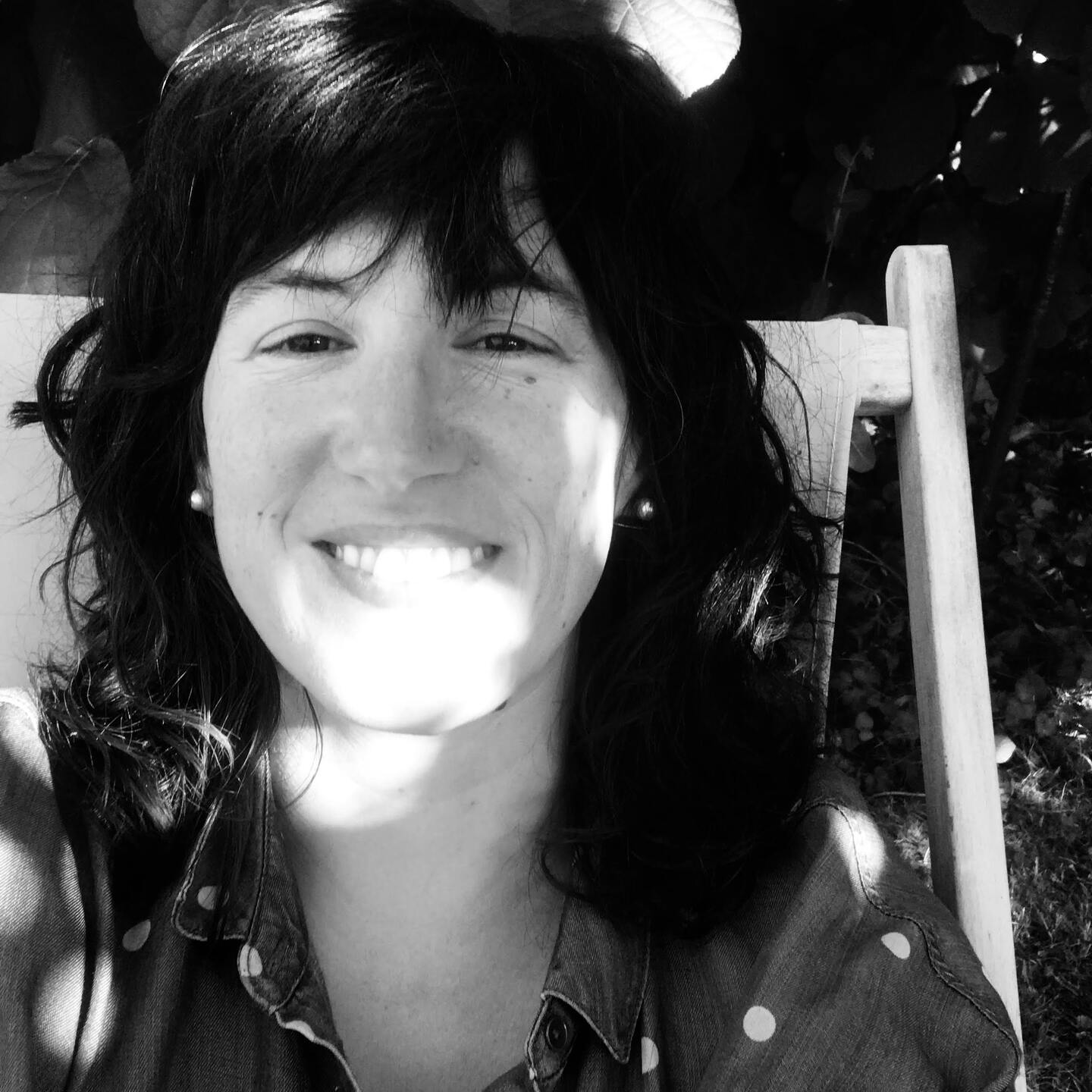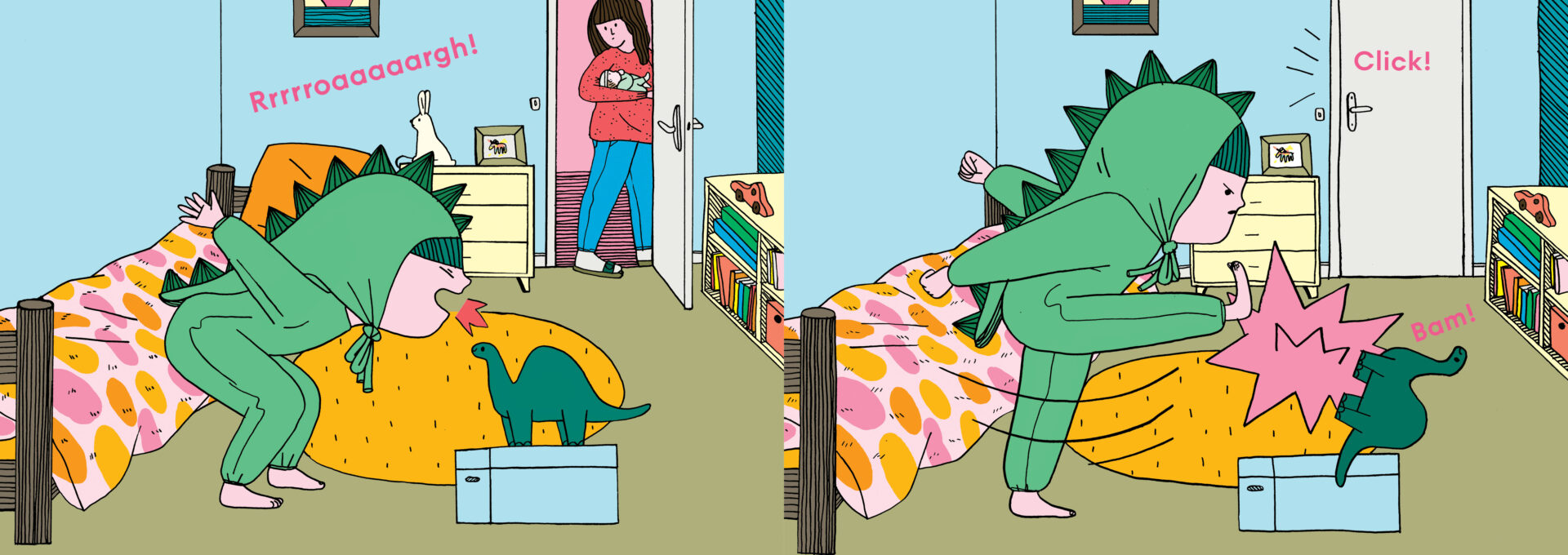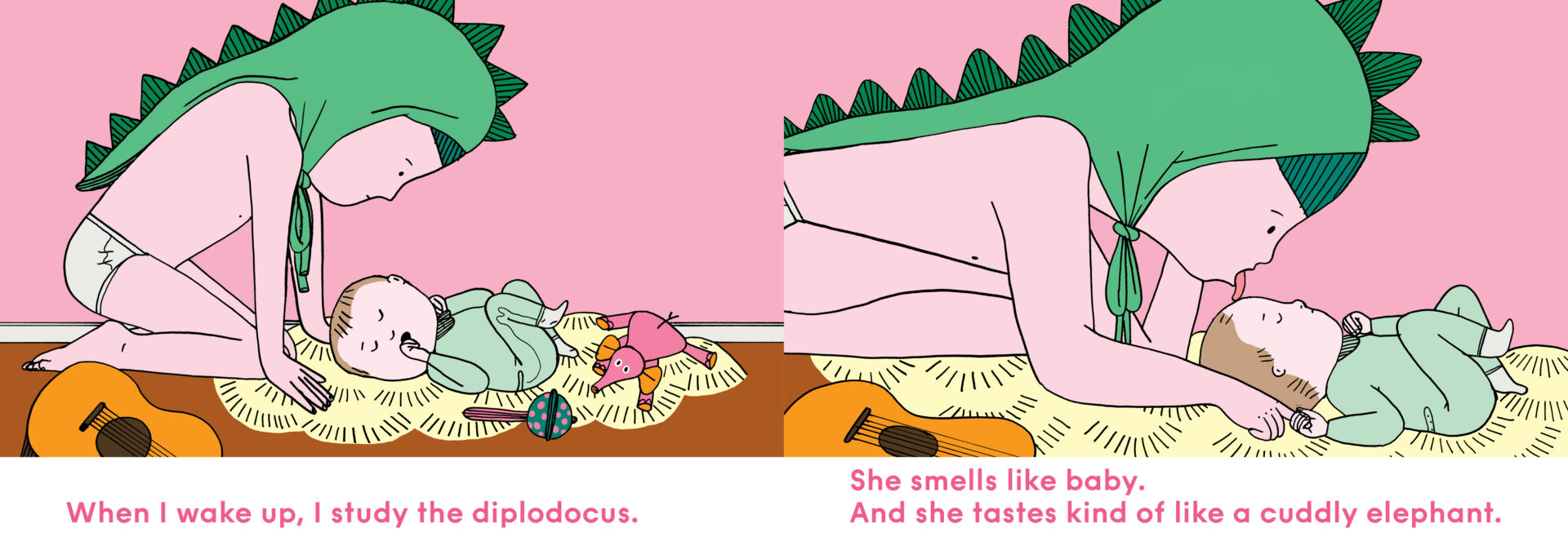 Aurore Petit was born in 1981, one of a generation of French illustrators to emerge from the influential School of Decorative Arts in Strasbourg. She lives in Nantes, where she publishes children’s books, illustrates for children and adults and works on theatre sets. Her books with Gecko Press are A Mother Is a House and My Baby Sister Is a Diplodocus.
Aurore Petit was born in 1981, one of a generation of French illustrators to emerge from the influential School of Decorative Arts in Strasbourg. She lives in Nantes, where she publishes children’s books, illustrates for children and adults and works on theatre sets. Her books with Gecko Press are A Mother Is a House and My Baby Sister Is a Diplodocus.
You have written a number of books that follow your family, who grow up book by book. Why is family a subject you write about?
A Mother Is a House is the story of the birth of a baby and the birth of a mother. It’s more recounting my experience of motherhood because the book is really centred on the mother–child relationship. My Baby Sister Is a Diplodocus is about a particular encounter between a brother and a sister.
What interests me is not so much the subject of family as the daily life of children. I watch them live, and sometimes I witness a scene and say to myself: this situation speaks volumes, it really tells me something about the relationship that a child or a baby has with their world, their people, their objects, the spaces that surround them.
So to answer that question, I would say that I am not concerned with the subject of family. Rather, I try to talk about those powerful moments that children I observe can go through, foundational moments. It turns out that, in a child’s world, family comes first.
Of course, besides the fun and magic of it, there is a more serious layer. The idea of welcoming others feels very pertinent in today’s world where we shut out, build walls, and push back those who need our help and care. For me the main “message” of My Baby Sister Is a Diplodocus is that there is no such thing as “not enough room” and that problems can be overcome by working together.

Does writing these books distance you from the events you describe?
It does certainly create a distance. But at the time of writing, I can’t have too much distance because I have to stay connected to my memories, to my mental images of the scenes I have experienced,and it’s important that this memory is still very much alive at the time of drawing, to give form to the characters faithfully. And then, these books are a little like an archive, a way of not forgetting important events that shaped me as a parent. And finally, they are gifts, for my children.

Why did you chose a horizontal format for this book?
This book tells the story of the arrival of a newborn. The baby’s world is on the ground, lying down, horizontal. The format seemed obvious to me and allowed me to be in a completely different narrative and rhythm from the other books.
Why do you choose to illustrate and print in special inks?
I want a very modern and dynamic look for these books. The stories show everyday moments that are quite realistic in their set-up, so I wanted a shift in colour that would take us out of the real world. I chose a fluorescent pink to heighten all the colours and give the illustrations a pop art feel.
Your books have appeal for adults as well as children, particularly A Mother Is a House. Is that something you generally consider?
My personal projects are often made for both children and adults, and I defend my choice to do that. Creating this kind of “double reading” is part of my process of making a book. Parents recognise themselves in these books; they create a bond between adults: we tell each other about our experiences as parents at book events. It is intimate and universal at the same time. I like it a lot.
My Baby Sister Is a Diplodocus | Available from all good bookstores
In this eye-catching neon-bright picture book, a brother finds an inventive way to connect with his new baby sister through his love of dinosaurs.


